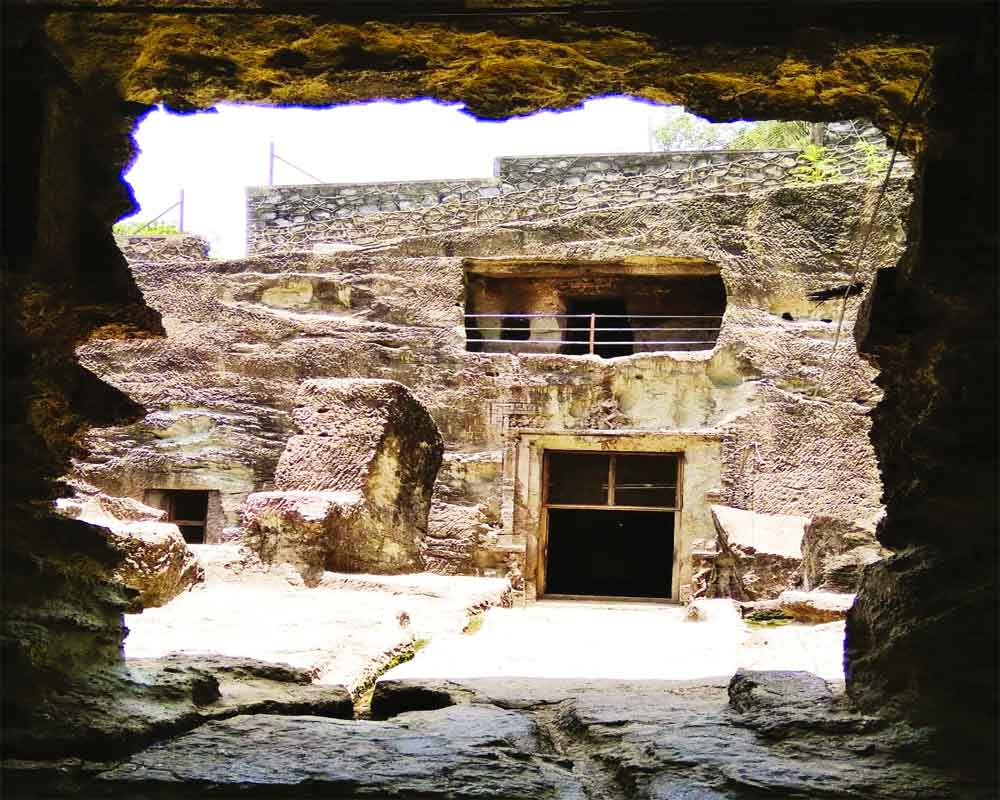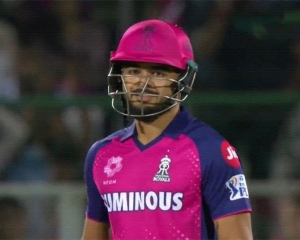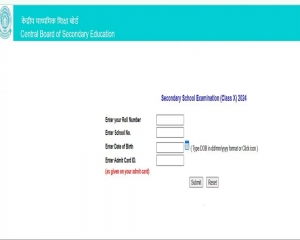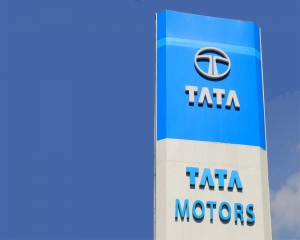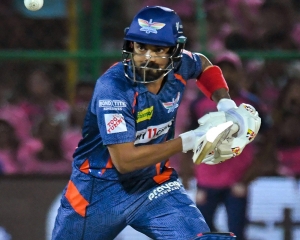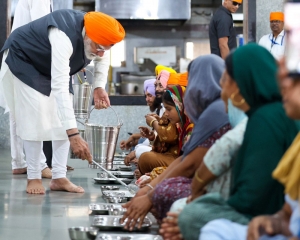The lifeline of Mumbai is undoubtedly its ‘local’ trains, which hold a special significance in the history of Indian Railways. On the momentous day of April 16, 1853, the first-ever passenger train chugged out of Bori Bunder (now Chhatrapati Shivaji Terminus) and covered a 34-km distance to Thane. The train was flagged off with wide applause and a 21-gun salute, writes Susan Mishra
The lifeline of Mumbai, a continually evolving and expanding cosmopolitan city, is undoubtedly its ‘local’ trains working round the clock, transporting lakhs of people to their desired destinations. The Mumbai ‘local’ or suburban trains hold special significance in the history of Indian Railways. On the momentous day of April 16, 1853, the first-ever passenger train chugged out and covered a distance of 34-km from Bori Bunder (now Chhatrapati Shivaji Terminus) to Thane. The train was flagged off with wide applause and a 21-gun salute, and this line was to later be commonly known as the central line.
In 1867 the first suburban service was inaugurated, with one train each way, from Virar to Back Bay with halts at Neela or (Nalasopara), Bassein (Vasai), Panjo (between two creeks of Vasai), Berewla (Borivali), Pahadee (Goregoan), Andaru (Andheri), Santa Cruz, Bandora (Bandra), Mahim, Dadure (Dadar), and Grant Road and Bombay Back Bay. This was to be later known as the Western suburban line, and its Churchgate station opened in 1870. This station is named after the once existent old gate, one gate among others, of Fort George of Mumbai, which led to the St Thomas Cathedral. The gate was pulled down along with the fort in the 1860s. The Western Railways General Managers office also known as Bombarci (an acronym for Bombay, Baroda Central India) is a heritage structure set amidst a landscaped area at Altamount Road, Cumballa Hill, and was constructed in 1925 as a bungalow for Railway Agents.
What clearly strikes one's attention while traveling on the Western ‘local’ is the names of some of the stations - Jogeshwari, Mahalakshmi, Ram Mandir, and Prabhadevi. One wonders what are the legacy, myth, and historicity of these temples, which rendered their names to the railway stations. The probing unfolds interesting myths and folklore (Mahalakshmi and Prabhadevi), remains of temples destroyed (Ram Mandir, Mahim), and an ancient cave temple (Jogeshwari). Along this journey of discovery one learns of other places such as Walkeshwar and Parel that are steeped in history.
From the Charni Road station at a distance of 5 kilometers or so is the Walkeshwar temple complex. Located amidst the high-rise buildings of Malabar Hill this pilgrimage site has great antiquity. The temple complex at Walkeshwar with the Banganga has an interesting past. Legends trace the creation of the Banganga tank and the temple of Walkeshwar to Lord Ram. The name Walkeshwar is a compounded word of Valuka (sand) and Ishwar (God), and signifies the God of the Sand. According to legend, Lord Rama, when on his way to Lanka, halted on the very spot where the Walkeshwar temple stands. He made a lingam of the sand of the sea-shore and performed the pranpratishta and consecrated it. A temple dedicated to Walkeshwar was built by the Silaharas of the north Konkan somewhere in the 10th -12th century CE, but it was eventually destroyed. Several richly-carved stones and other fragments, dating apparently from the 10th century CE, are reminders of the past temple. The modern temple of Walkeshwar was built in or about 1715 by Rama Kamat, and large fairs were held at Walkeshwar on the full-moon day of Kartika and on Mahashivaratri. In front of the temple is a fine masonry tank, called the Banganga or sacred stream of the arrow. It is a rectangular tank with steps on all sides leading down to the water. The story behind the creation of the sacred water tank is that Lord Ram in order to quench his thirst shot an arrow (Ban) into the ground that penetrated the earth and led to the formation of this freshwater tributary of Ganga.
The journey to unravel Mumbai’s rich past continues on the Western line and after two stations the train halts at Mahalakshmi. This goddess temple at Bhulabhai Desai Road sits atop a hillock with a commanding view of the Arabian Sea. The myth or story regarding this temple is closely associated with the very first attempt at land reclamation in Mumbai. In 1782, attempts to build a causeway between the island of Bombay and Worli Island went in vain and much resources were wasted. At this juncture, the goddess Lakshmi is believed to have appeared in a vision to Ramji Shivji Prabhu, the contractor, and promised removal of all obstacles provided he retrieves her image from the sea and places it in a temple. Accordingly, Ramji Shivji dug out her image, placed it in a temple, and subsequently achieved success and completed the causeway. The current temple structure is attributed to Dhakji Dadaji (1760–1846), a Hindu merchant, who constructed it in 1831.
The next halt is Parel, which even though does not connote any religious significance, yet this island was once crucial in the ancient past. A walk to the top of the Golanji hill, just 500 meters from the King Edward Memorial Hospital, is a small non-descript temple with sculptures of immense significance. Housed in a simple structure, is a 5th /6th century CE unfinished 10 feet image of Shiva, locally known as Baradevi. The image surfaced in 1931 when a road was being constructed. Many sculptures are still located in situ at the temple site on Golanji hill, which dates back to between the 10th and 12th/ 13th century CE. There is no doubt that at Parel there once stood a temple that survived for over 600 years.
Parel also occupied a very important position during the colonial era of Mumbai. At a short distance from the Golanji hill is the Haffkine Institute for Training, Research, and Testing. This building has a multi-faceted and interesting past covering a span of two centuries. The building was originally a Portuguese Franciscan friary. It was taken over in 1719 and converted into the official summer home of the Governor of Bombay. In 1771, it became the Government House and the Prince of Wales took up residence here during his visit to Mumbai in 1875. The Residence was abandoned after the term of office of Sir James Fergusson due to the death of his wife during the plague of 1883. Thereafter, the Governors House/ Raj Bhavan shifted to its current location in the Malabar hills. On August 10, 1899, the present mansion was formally handed over to Dr. Haffkine and was then known as Plague Research Laboratory. In 1906, the Institute was renamed Bombay Bacteriology Laboratory. Nineteen years later, in 1925, the institute got its current name- Haffkine Institute, in the honor of Dr. Waldemar Haffkine who had developed vaccines against cholera and bubonic plague.
Parel was also a hub of industrial activities in 19th and 20th centuries with the setting up of the Central Railway Locomotive Workshop by the Great Indian Peninsular Railway in 1879, and numerous textile mills at Lower Parel. These old textile mills are now posh localities, and house offices, multi-storeyed buildings, and recreational spots.
Continuing the journey, the next halt is at Prabhadevi station which was earlier known as Elphinstone Road station. The Prabhadevi temple is located at a short distance from the station and this simple temple structure speaks of the history of Mahim and the Pathare Prabhu community. While the temple dates to the 18th century CE, the image installed is believed to belong to the 12th century CE. According to local folklore, the original temple was destroyed, and to save the image from desecration the Prabhu community left it in a step-well. The deity appeared in the dream of a Prabhu devotee who then retrieved the idol and placed it in a temple in 1715 CE. As a throwback to the past, tucked in corners of temples and in the precinct of the Mahim Police Station, are sculptures and architectural elements of a medieval era temple.
The Bimbakhyan, an old Marathi poem that translates to ‘Tale of Bimba’, tells us that Raja Bimbdeva had migrated from Anahilavara or Devagiri to Mahim in the 13th century along with the Pathare Prabhus. Raja Bimba found the largely uninhabited island beautiful and was so besotted with the place that he settled there. Mahim was located along the trade route and its sheltered bay and rich hinterland made it an important place. It is believed that the Nakhodas (shipmasters) who claim descent from Arabia came to India in the 8th -9th century CE and settled here.
Proceeding further four stations d, and immediately after the Andheri station, the train halts at Jogeshwari. The temple at Jogeshwari, originally a Shiva temple, is a large rock-cut cave temple structure dating to 5th -6th century CE. Jogeshwari is considered amongst the earliest major Hindu cave temples in India and is the largest in terms of its length, measuring 250 feet east to west. The portion above the lintel of the eastern entrance has exquisite carvings of Kalyanasundara-- the marriage scene of Shiva and Parvati, Shiva and Parvati are playing dice and Shiva as Lakulisha is surrounded by his disciples. The site continues well into the 11th -12th century CE, as is amply proven by inscriptional data and metal objects housed in the CSMVS and Raja Dinkar Kelkar Museum - a lamp chain with an oil container of bronze, bells and silver bangles of 8th/ 9th century CE. An inscription dating back to 1137 CE mentions the temple site and attests to the continuity of worship at Jogeshwari for well over 600 years.
The next station, on the Western suburban railway line, is Goregaon followed by the Ram Mandir station. The current temple structure is relatively new, but clues to its medieval past lie in the half-broken pillars, old structural remains in the temple compound, and an animal head on the outer wall of the temple. The stones of the temple well originally belonged to a ruined temple
The train proceeds from here towards the Vasai creek. After crossing the vast mesmerizing creek, which once harbored sailing vessels in past, the train reaches Nalla Sopara. Henry Cousens, an archaeologist writing in the late 19th century, “My visit to the place Sopara” tried to ascertain whatever ‘Hindu remains’ were to be found there. That ancient Hindu temples did exist in this part of the country is without a doubt. Numerous sculptural remains recovered from the lake near Chakreshwar Mahadeva temple and other locations are placed within and outside the temple. These include images depicting an array of Hindu deities- Brahma, Varaha, Gajalakshmi, Shiva, Parvati, Nandi, Surya, Mahisaurmardini (Durga), Harihara, and Ganesha. The life-size unfinished three-faced image of Brahma of the 10th -12th century CE is the most exquisite and mesmerizing amongst them all. Another beautiful image is that of Vishnu which is currently placed in a shed along the Bolinj-Sopara road.
The train moves ahead towards its last station- Dhanau Road, and then makes the return journey to Churchgate.
The Western suburban line is not merely a railway track communing people, but a bridge between the past and the present. The station names enrich our understanding of Mumbai’s past and are a constant reminder of the rich cultural landscape, well-entrenched artistic and architectural tradition, and unique heritage of the city.
(The writer is a research scholar and recipient of the Devangana Desai senior Fellowship CSMVS Mumbai. She is also the author of two books)













